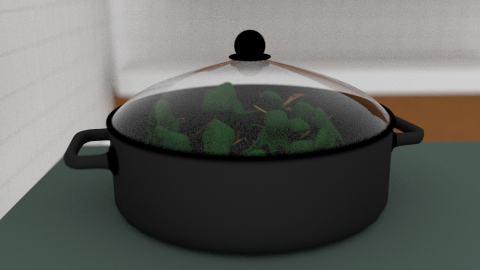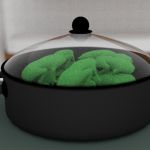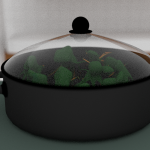Crabs, Frogs and Squids
– An Experimental Installation about the “Sudden Transformations” of Objects in Nightly Dreams
“Crabs, Frogs and Squids” is an experimental installation which aims to reproduce the phenomenon of “sudden transformations” of objects from nightly dreams into the waking life through an artistic virtual reality simulation.
A “sudden transformation”, which is also identified as a “discontinuity” by Adam Mamelak and Allan Hobson, is a “bizarre dream phenomenon”, which occurs when certain aspects of a dream (such as the plot or the persons or objects or actions) manifest a sudden change of identity or features or their location in time and in space.
This case study, is a reproduction of this phenomenon and it is based on a dream I had in 2013 on second of april. For the reproduction of these following three transformations, I sketched and animated each step of the transformation in three different videos.
- Frogs
- Crabs
- Squids
On 2nd of April 2013, I dreamt that several crabs are in a pot and they are fighting with each other to climb on top. On a second look, I notice that these crabs are actually frogs which are jumping in the same pot. Yet on the third look, I realize that these creatures are in fact squids which are captured. Short after the last transformation I woke up.
Allan Hobson and Adam Mamelak “explicitly assume that the isomorphism between brain and mind is complete, so that any form of mental activity can be equivalently represented at the brain level by some aspect of neuronal activity.”
So, if we return back to my dream, for the simulation of the transformations, which I saw between the three creatures in the pot, I used the data from an EEG (Electroencephalography) device. Hobson and Mamelak also mention that the bizarre phenomenon of “discontinuity” is linked in part to the absence of internal continuity in dreams. Internal continuity is a cognitive function based on memory, attention, and thought.


For the wake life simulation of this phenomenon, I chose the attention level of the user in order to trigger the sudden transformations. Attention level is measured with the brain computer interface Neurosky Mindwave. The Attention eSense algorithm of Mindwave calculates the attention level of the user out of different brain wave frequencies and gives a value from 0-100.
In the example of “Crabs, Frogs and Squids” on low levels of attention the user sees the crabs jumping in the pot. The raise in the level of attention simulates that the user proceeds to the end of the dream, in other words to the wake consciousness, With a raised level of attention the crabs change into frogs and on the top level of attention near 100, the frogs transform into squids. Nevertheless the dream doesn’t end, even if the attention level is 100 percent.
Works Cited
– Rittenhouse, Cynthia D., Robert Stickgold, and J.allan Hobson. „Constraint on the Transformation of Characters, Objects, and Settings in Dream Reports.“ Consciousness and Cognition 3.1 (1994): 100-13. Print.
– Dream Bizarreness as the Cognitive Correlate of Altered Neuronal Behavior in REM Sleep Adam Mamelak, J. Hobson
Journal of Cognitive Neuroscience – 12/1989



